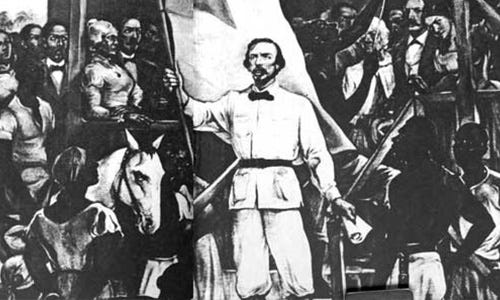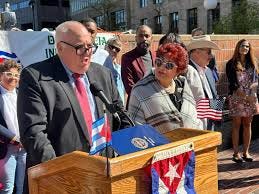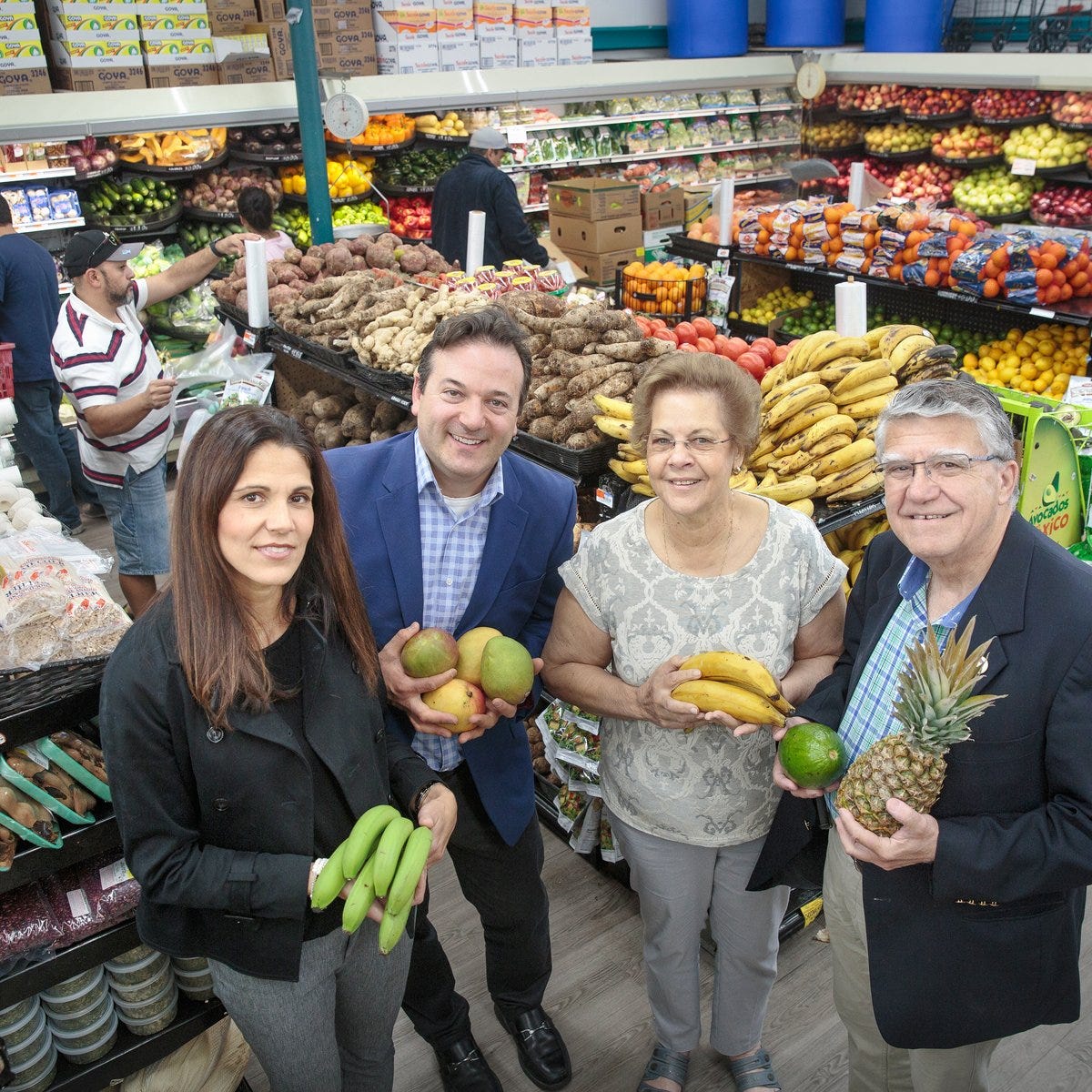When I was growing up as a Cuban American in the late 1960s in New Hampshire, there were so few Latinos that I thought anyone who spoke Spanish was related to us. I learned the truth one summer day when we ran into an Ecuadoran family at Silver Lake, and I asked my parents if they were our cousins. Their answer stunned me. There were more people like us out there. And we didn’t even know them.
Our comunidad back then was made up of five far-flung Cuban exile families who were trying to put their lives back together in a snow-encrusted Nashua. There were no Spanish newspapers or magazines, television or radio programs, and certainly no internet. For my grieving abuela, who’d left her father and brother in Cuba to help her daughters start new lives in the US, it must have felt like Mars. Our food was about the only physical link to the past, but to buy frijoles negros or Cuban galletas we had to drive to a bodega in Lawrence, Massachusetts—Lóren to us.
We were alone.
I couldn’t help but think of those days as I stood in front of Boston City Hall last Sunday afternoon.
I was there at the invitation of Bandera Cubana, a Cuban American group that each October commemorates the anniversary of el Grito de Yara, the 1868 uprising that triggered Cuba’s wars of independence against Spain.
I looked around at the roughly 75 Cuban Americans—all colors, all ages, from different backgrounds, and with different arrival dates in the US but the same reason for leaving Cuba: a revolution gone haywire and liberty lost. I didn't know most of them, but I knew they would understand my story, and I would understand theirs. We shared a native—along with an adopted—language, history, and culture. A community of the lost and the found.
I was savoring that sense of belonging as the Cuban flag was raised to half mast, next to the US and Massachusetts flags, which flew at full. The crowd started to sing the Cuban national anthem. Some of us only hummed the tune, because we’d forgotten the lyrics our parents had tried so hard to teach us. I thought of my parents then, and felt the familiar squeeze in my chest. My eyes started to fill, but my mood shifted when I heard someone ask—quite breathlessly—“What’s the Cuban flag doing flying over Boston City Hall?”
I turned and met Marlene, a confused and curious Cuban American tourist from Los Angeles. Over her shoulder, I saw the rest of her family running to catch up with her. They were as breathless and baffled as she was.
Marlene’s eyes shifted from the flags snapping in the wind to the people sitting in their chairs as I explained. She nodded, smiled. She’d been born here, she said, but her mother had kept Cuban traditions and history alive.
That’s what Boston’s small but determined Cuban American community was doing that day: celebrating the beginning of Cuba’s independence in their hometown of choice, Boston, the cradle of liberty. And, ever grateful to their adoptive homeland, the community was also showing its gratitude for the freedom and the home they’d found here.

We’d already busted out The Pledge of Allegiance and The Star Spangled Banner. Now, Boston City Councilor Ed Flynn was mentioning our community’s contributions to the region since the 1950s, and helping us continue this 32-year-old flag raising tradition and celebration of libertad. Mayor Wu’s representative joined him, reading the proclamation that today, 6 October, was Boston Cuban Independence Day.
Just down Tremont Street that same afternoon, another group was holding an event. Over a thousand people were marking the first anniversary of the Hamas massacre of more than 1000 Israelis with chants of “From Palestine to Lebanon, Israel will soon be gone.” They marched to the Israeli consulate to shout slogans and took over Storrow Drive for half an hour.

The Cuban Americans at city hall didn’t know about the goings on downtown, but I’m certain they would have cringed at the revolutionary slogans, the zealotry, the militant call-and-response chants.
Our group was listening carefully to the force of nature behind our event, Regla González, an impossibly young looking 70+ Cubana who, frankly, is as intimidating as she is admired. After reminding us of the ongoing struggle for freedom in Cuba, the more than 1000 political prisoners who need our support, Regla stopped and looked at two women standing in a corner of the plaza. They were holding the Venezuelan flag between them.
“And we are here with our brothers and sisters from Venezuela,” Regla said. “The struggle for freedom in Venezuela and Nicaragua—everywhere—is our struggle. Come up here, muchachas. Stand with us. We’re with you.”
The women climbed up the steps and turned to face the audience. A cheer went up from older Cubans in the audience, who knew well the struggle the women and their country faced, the long road ahead.
Maria Vazquez, founder of the emblematic Miami store Sentir Cubano, was being honored that day. She’d created her business to keep our culture alive and to remind Cubans here of our history, and the need for liberty back home. She followed Regla’s lead at the podium and commended Venezuelans for not giving up. Libertad, she said, was our right and worth “everything.” She gave a shout-out to Venezuela’s opposition leader Maria Corina Machado, hailed her as an example of Latina strength and courage.
Vivian Calvo Iannotti, CEO of the Latino grocery chain Stop and Compare, the other honoree that day, described her mission of helping the Latino community thrive, of her stores serving as a center for the community, of the pride she feels in her Latino employees, whose roots reach back to countries throughout Latin America. “We are here to help each other,” she said. “That’s our purpose.”

Later, Regla invited everyone for a simple lunch inside City Hall, and of course Cuban music. As I made my way through the buffet of arroz con frijoles, roast pork, garlic infused yuca, and a cake decorated with the red, white, and blue of the Cuban flag, I spotted Marlene and her family sitting down next to new friends in a faraway city. They were speaking her mother’s language, sharing the same food she’d made, feeling grateful for this great country, listening to music that lifted the spirit, that made you feel free—that brought you home.
Hasta la semana que viene . . .
Ana







The inspiration for Cuban Independence mirrors the American revolution’s call for freedom. Amazing that after achieving independence, the Cuban people lost their freedom to Communism.
From the link above:
Grito de Yara. Carlos Manuel de Céspedes y del Castillo’s call to rebellion, which initiated the Ten Years’ War, was issued from this town near his plantation of La Demajagua, on October 10, 1868, against Spain, in the name of the newly organized Junta Revolucionaria de Cuba. The manifesto proclaimed Cuban independence from Spain, stating that this was a response to arbitrary government, excessive taxation, corruption, the exclusion of Cubans from government employment, and the lack of religious and political liberty, particularly of the rights of assembly and petition.